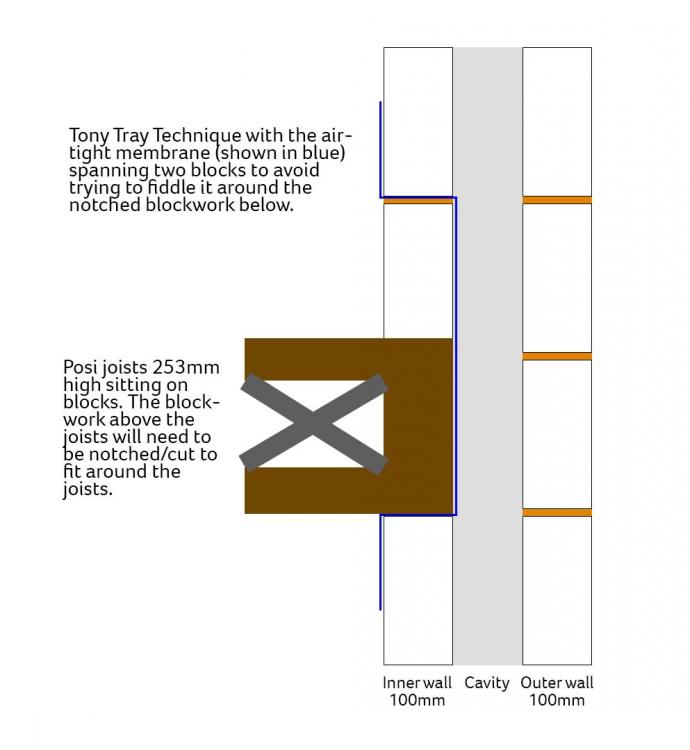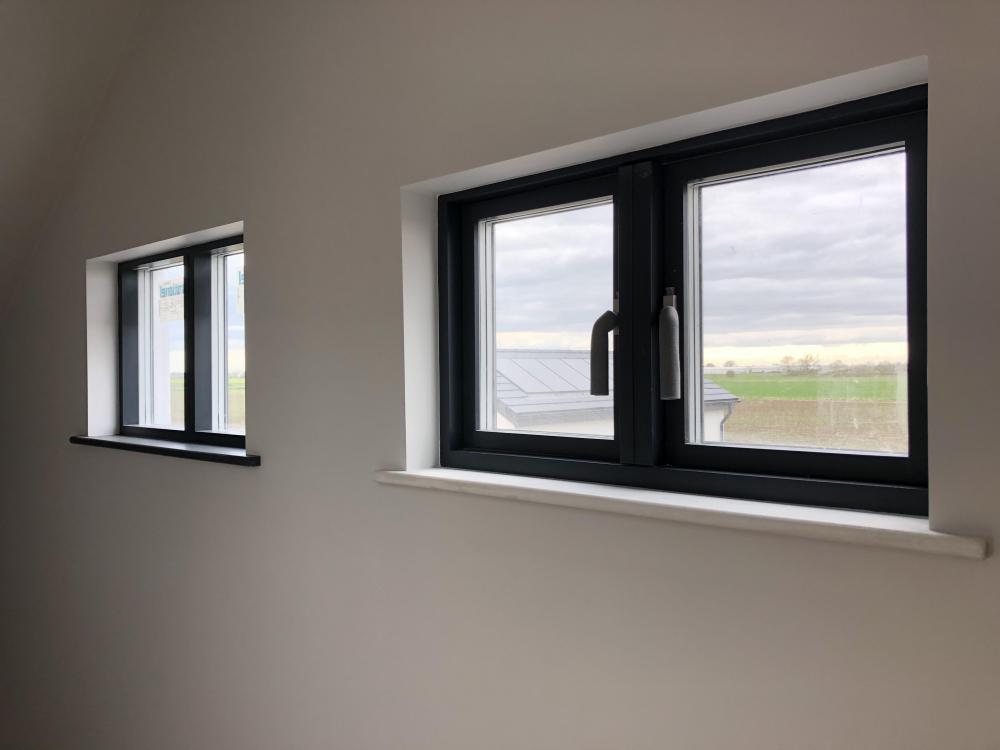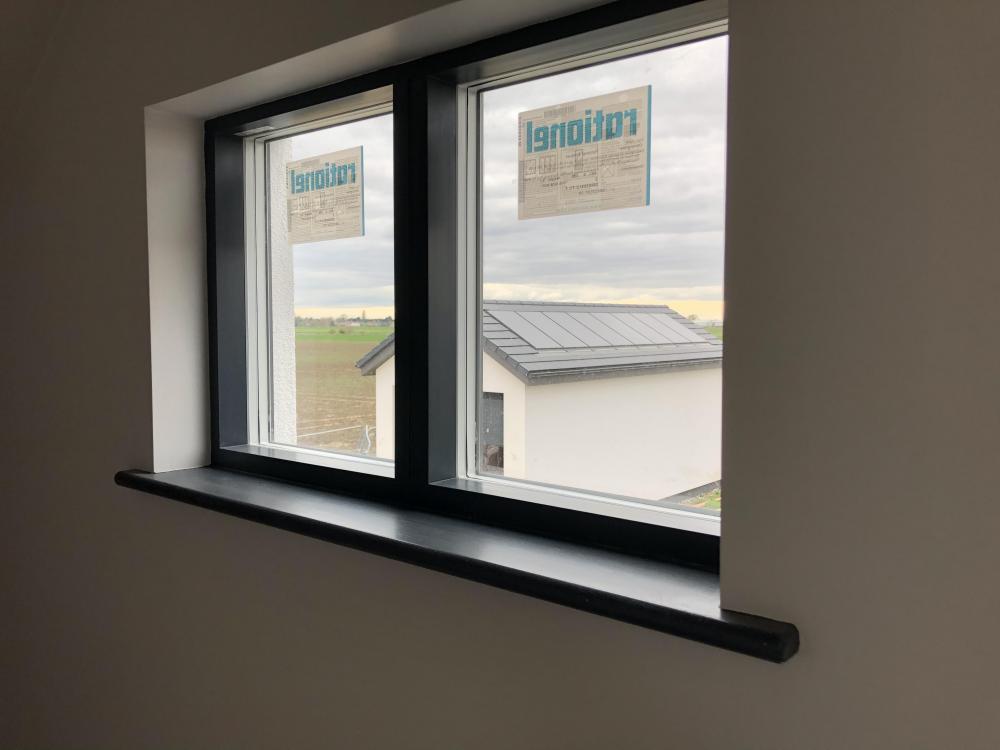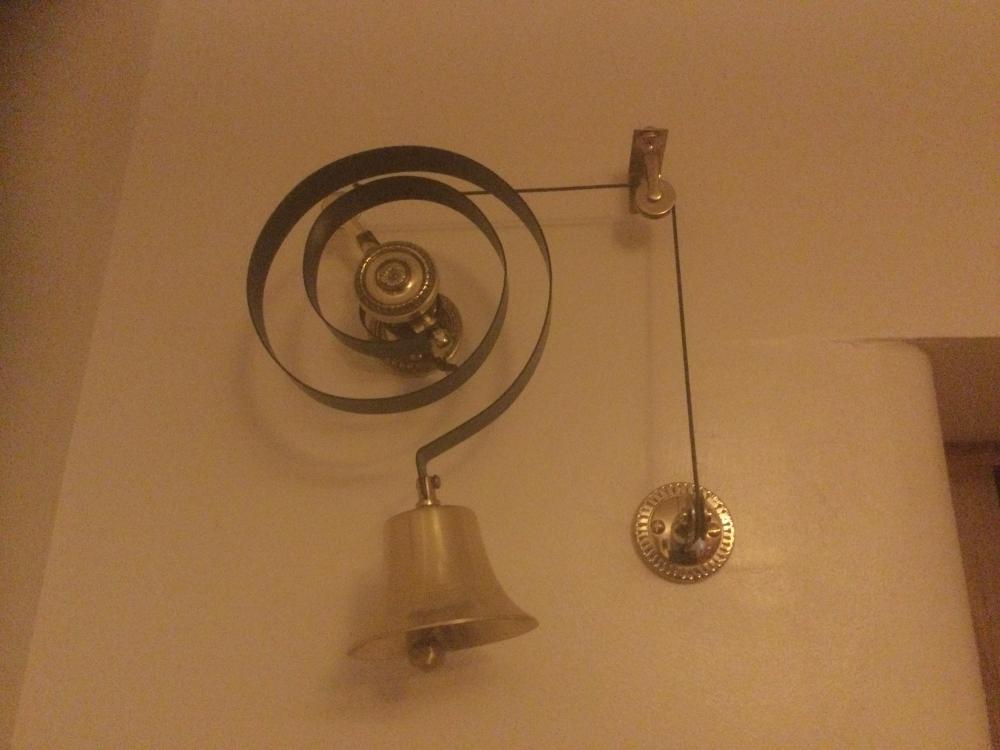Leaderboard
Popular Content
Showing content with the highest reputation on 04/11/21 in all areas
-
The only "complicated" thing with a small ASHP and UVC is re heat time. Following on from Peters comments above, people were used to an UVC from a gas or oil boiler that would re heat in not much more than half an hour, so running out of hot water is not an issue. A small ASHP takes very much longer to re heat a depleted UVC. Add in the fact that the UVC will probably be larger due to the water being stored at a lower temperature. It's therefore quite possible with multiple showers to run out of hot water before the ASHP is able to re heat it. I have "solved" that as I now have Jeremy's old Steibel Eltron instant water heater in line with the UVC output. It is set at a degree or 2 lower than the UVC temperature so normally it does nothing but if the tank starts to run cold it will boost the temperature. One thing i would say when ordering a tank for an ASHP is get some extra thermostat pockets installed. I forgot to specify that when I ordered my Telford 300L heat pump tank so I only got the 2 default pockets. Even the lower one of the 2 is about 1/3 of the way up the tank. So the tank could be down to only 200L of hot water in it before the ASHP even knows it is getting depleted. If I were ordering a cylinder now I would want an extra thermostat pocket or 2 lower down, say one at immersion heater level and one just a bit above so you could experiment with which works best.2 points
-
I think the main issues are that in the 60- early 90’s, everyone had a hot water tank from either a back boiler or “the immersion” that was small, and the memory is of water running out. Then in the 90’s the combi boiler took hold and it was “all you can use hot water” but the pressure was crap. Megaflo came along and tried to fix some of the problem, and then UVCs took hold properly so we have mains presssure hot water, but a fair amount of it. The issue now is switching to new heat sources, and there is always the fear of running out of water as people have got used to the endless nature of a combi, but want the flow of mains pressure, with the economy and “eco credentials” of the ASHP... its the holy grail of DHW ..!2 points
-
We have 253mm posi-joists for our build, which will sit on the walls and therefore protrude above into the next row of blocks, so the next row of blocks will need to be cut/notched around them. We would like to use the Tony Tray technique, but to avoid trying to fiddle the membrane around the posi-joists and the notched blockwork, can anyone see a problem with bringing the membrane back in on the next row of blocks above? An overall flaw or perhaps a wall tie problem? See attached photos, hope it makes sense. Thanks.1 point
-
1 point
-
1 point
-
1 point
-
Lay it above the slab to the kitchen Island. The less times you puncture any waterproof or radon layer the better. Also less chance it gets damaged or cut back and forgotten during construction of left till later1 point
-
1 point
-
I've a Nest Doorbell and have it on the free version so not paying a subscription. We have standard bells so no lag with them. 2-3 second average lag with the phone notification but by the time you've the phone unlocked and opened the app you'd have answered the door. My parents are Magpies and wanted a Nest after seeing mine so fitted one for them. They've the subscription and it has benefits but not enough for me to bother paying. If I'd more cameras (which I intend to get in time) I'd get a subscription.1 point
-
Much depends on your circumstances and what you have cover wise to fabricate the panels on site for example. I have a job that comprises a 210m sq bungalow to go up this summer just south of Glasgow, warrant all approved etc. The client has a shed next to the new house. The contactor is going to stick build the panels in the shed. I did a set of panel drawings / nailing schedule for the contractor to follow. The economics seem to stack up for the client. The timber frame is 145 x 45 C24 for the external panels. 95 x 45 C24 for the internal panels, some of which are racking (shear) walls so they are sheeted on one side for building stability. The roof is formed in prefabricated timber trusses with some cut roof infill. The ceiling heights are 2.9m and the house is in a windy spot hence the use of the 145 deep C24 timber for the whole structural frame. This C24 throughout is partly to avoid anyone mixing up timber grades accidentally. In Scotland we have been building TF for a good while.. both stick and prefabricated. In recent decades this has become more mainstream in the southern part of the UK. There are many advantages to stick building so don't rule this out as an option to look at. Here are just a few examples: 1/ You can buy the timber on account at a merchants, no kit deposit to fork out for up front or worries about the TF fabricator going bust. 2/ You can just build the panels you really need for structural stability, stand them up and get the roof on. 3/ It's easier to change your mind as you go.. maybe move a non load bearing wall.. it's your frame! 4/ You can shop about for all the insulation, metal fixings and so on. 5/ If the brickie has not got the found true / square then you can often adjust the panels as you make them on site.. that can be a real bonus as it can take a lot of the heat out of a potential nasty argument over who is to blame. 6/ You can be more sure of the quality and accuracy of the nailing and so on as you can examine the panels before the vapour membrane say is stapled on. 7/ If using say local trades folk it gives them a good run of work, in some ways they can come and go in terms of flexibility, wet days make panels, dry days put them up, that can lead to a saving.1 point
-
Well you can measure the impedance of each of the conductors of the ring and enter that, and you can measure Zs and enter that. There is nowhere to say it is anything other than a standard ring. Your Zs may be a bit higher than R1+R2 would suggest.1 point
-
tony likes it, which courses will the wall ties be in? where the inside if the tray flaps over the blockwork I pin or staple EML over it before wet plastering this works well at ceiling level or behind the skirting, slightly more concerned about a slip plane one course up and a crack developing. Escape route is to turn the tray 50mm down and fix 150 wide EML over it, 50mm of hermetically sealed to blocks above and below and anti cracking over it.1 point
-
yeah, the end users are never the problem, it's the box tickers where the issues can be!1 point
-
You can, but you need to argue with your solicitor and the buying solicitor that it's the way to do it and not the retrospective/certificate of lawfulness route. I once send a 5 page explanation to solicitors of why a project met permitted development rules, quoted all the specific clauses etc - they said it wasn't acceptable because I had been paid to design it! The report was 100% factually correct and couldn't be disagreed with but it still wasn't acceptable to solicitors who didn't know the difference between building regs and planning...1 point
-
20mm conduit snags cables and it’s tiny inside - just use black or grey 32mm waste pipe. Cheap as chips and near impossible to damage.1 point
-
It makes little difference that the contract was not signed. If it can be shown that the intention of the parties was to be bound by the terms then you have a contract. Regarding subbies arriving and removing materials, this is illegal as the materials are fixed in place. You need to issue a notice to the builder that the contract is determined. I suggest that you get a professional quantity surveyor with expert contract management skills to draft this, as the wording is important. They can also advise you on how best to proceed with the project. Agree their fees in advance for, say, 2 hours work.1 point
-
If it’s a ‘bubble top’ cylinder ( which traps air in the upper 1/8th for expansion ) then all you do is completely drain the tank ( using a hose pipe to drain from the cylinder drain off cock, not by just opening the hot taps ) and then just refill the cylinder to replenish the bubble. Simple as. The pipe coming out of the top just extends down inside the cylinder, referred to as a ‘dip pipe’, and that makes sure the air cannot come out with the flow of hot water. The cylinder type needs to be confirmed somehow of course, but if you had zero expansion you’d be seeing water discharged out of the pressure relief valve on every single reheat cycle. The higher discharge for a few seconds is usually just the volume of expansion giving up its stored energy, and then you drop back to direct mains whilst the taps are open. When shut again, the stored energy builds back up ( cold mains incoming potential ) to allow the same to occur again. That tells me that expansion is present, otherwise you wouldn’t have that notable higher initial discharge. Having no water hammer on the hot fortifies that opinion, so I’d say you have an aggressive cold mains and that is being further exacerbated by poor mechanical fixing of the house cold water pipework. Buy a 8L potable expansion vessel and install it on the cold mains as close to the stopcock as possible. Do that first, before touching anything. To commission it you need to know the static cold pressure at the stopcock so you can set the 8L EV back charge pressure accordingly.1 point
-
I think you will find the whole stick building situation nearly non existent in the uk. I stick built my last place but over here most things are built off site in panel form. So the whole California corner stuff just doesn’t come in to play. I think some of our timberframe builders are miles ahead of the yanks, look at the builders over here doing the double stud walls.1 point
-
I too bought a stiebel Eltron in case it’s needed, still in its box in the loft. A agree with @ProDave about stat pockets but have found the upper one of mine is fine fir the two of us but can move it to the lower one when guests descend (hopefully soon ?♂️).1 point
-
I had a look around and found the planning application. I can see why you would want to object, but in truth I doubt it will have much of an impact on you. Considering the proximity of the A1 and railway line, I doubt objections re noise will be entertained. From a planning perspective, the council will argue that moving an operation from somewhere where they park cars all over the place on the road to somewhere where they have all the cars in a compound is an improvement overall. It isn't for you, but from the council's perspective it would be better. Thus complaints re the current parking position will not necessarily help, if anything they may be supportive of the new application. But considering the parking situation, it may be worthwhile to ask for yellow lines to be placed to stop cars being parked outside the development, pointing to current issues. I suspect this is one of your main worries, that the business gets bigger and cars start to spill out onto the road. I would also ask that they screen planting on the side of the site towards your house is at least 2M high. Looking at the site history they have a lapsed permission to build even closer to your house in 2007 and they were refused permission to build where they now propose to build in 2005. I think they are actually using your house as an argument to go back to the 2005 position. I would be worried that they go back to the 2007 position if they are turned down here. However, understanding that you would rather not have it near to your house, I would try and find out why it was refused at planning and appeal in 2005. My suspicion is that it was because it was next to the cemetery and it looks like the community council may have objected at the time and it may be worth asking what has changed. They might say that the business is larger and more of a nuisance now so it is the lesser of two evils. The piece of land is surely too small for agricultural use so I doubt that objection works either.1 point
-
Eh..?? Is it a Megaflo cylinder then with that really nasty air space at the top ..?? wonder if the installer read this ..??1 point
-
Sounds like the bladder has perished on the expansion vessel. You can check it yourself if you have a tyre pressure gauge ..? Top of the expansion vessel there will be a black cap - under it is a standard car tyre Schraeder valve. Just push the tyre pressure gauge onto the valve and read the pressure. It should be 3 Bar (pre-charge will be on the cylinder somewhere) and if it’s below that then get the foot pump out !! Don’t be tempted to run an air line to it - you’ll split the bladder ... If it is zero then you may struggle to pump it up. Turn the water off at the mains, open a hot tap and then try again.1 point
-
With two layers you can stagger the joins, you can also flip one over to counteract and bends in the sheets. Not being able to get 150mm has probably done you a favour.1 point
-
1 point
-
Don’t use MDPE for the electric - if you need to put a duct in now, use grey or black 32mm poly waste pipe as it’s cheap and easy to lay and much better for the long bends at either end. Using blue MDPE is asking for issues and it’s not that big internally.1 point
-
No problem until someone decides to join into the ‘water pipe’ cuts through it after turning the water off and gets electrocuted all for ducting , but you would be better off with some 50mm flexi dusting designed for the job.1 point
-
No problem changing sizes of water pipe, and as its under the extension unlikely to freeze even with the shallow depth1 point
-
@Becca I stuck with render on boards. I'm only just doing foundations. But should be getting someone to do the render in the 3-4 months. I can keep you updated once it's planned. But I was getting quotes for 10k to supply and fit render system. That's assuming I have had the house battened and boarded out.1 point
-
You are entitled to your opinion. I paid a lot less than you for my kit, I got the mvhr unit from ebay and the ducting from BPC, self designed. From measurements I know I am running mine at about half the BR recommended rates and it is fine. The air is always fresh inside the house. The trouble with trickle ventilation, is a lot of the time it will be under ventilating, on a still day, but on a windy day, will be grossly over ventilating. MVHR really comes into it's own when you are building a really well insulated, and sealed, air tight house. But fitting mvhr might not always be optional. One self builder near me did a good job on sealing his house, so much so that when he had an air test done, the result was so good, building control insisted he fit mvhr.1 point
-
So ! doorbird ? ring ? UniFi g4 ? Really want poe . No monthly subscription cack ( but would compromise on that ) .But need to access the image for my own HA . Don’t want laggy / useless 2 way comms ( appreciate when I’m remote that could happen , but not on Lan surely ) . Want to tell people to (expletive deleted) off no matter in the world where I am . BTW “ doorbird “ isn’t a prostitute ...0 points
-
0 points
-
0 points
-
Build it and be damned ! Mines half a metre wider and 3 metres longer . Can’t measure that’s my excuse ?0 points
-
Thanks for the feedback although I think it should be with a lower case S as half my question/plan about the water side was ok ? Its also the reason I was asking so I could get feedback as I wasnt sure if it was a good idea, I have a lot of the blue pipe spare and as it will be under a slab, hardcore, insulation and screed and would terminate where it came out the blocks/wall I didnt think anyone would come across it in the future, but you never know. Happy to run something else in though. Would this be ok https://www.screwfix.com/p/tower-corrugated-conduit-20mm-x-10m/50443 Whilst im thinking of future proofing and hiding cables/aesthetics. The kitchen island will need power, am I better running this under the slab (or at least a conduit with draw cord), or above the slab and within a conduit in or in the insulation, both options have been suggested to me. Thanks for all the replies, really helps to clear the mind and set me on the right path even if my ideas are sh*t ? Paul0 points
-
Sounds shit to me with a capital S as has been said DO NOT RUN A POWER CABLE THROUGH A PIECE OF MDPE , unless of course you are a complete fool. Run the power cable in an appropriate duct for electric, it is pennies in the grand scheme of things. Nobody will hack through a duct without asking themselves what’s in this, whereas a bit of blue poly I would just hack through it with a mattock and kapow surprised at some of the people above who think this isn’t a silly idea.0 points
This leaderboard is set to London/GMT+01:00











